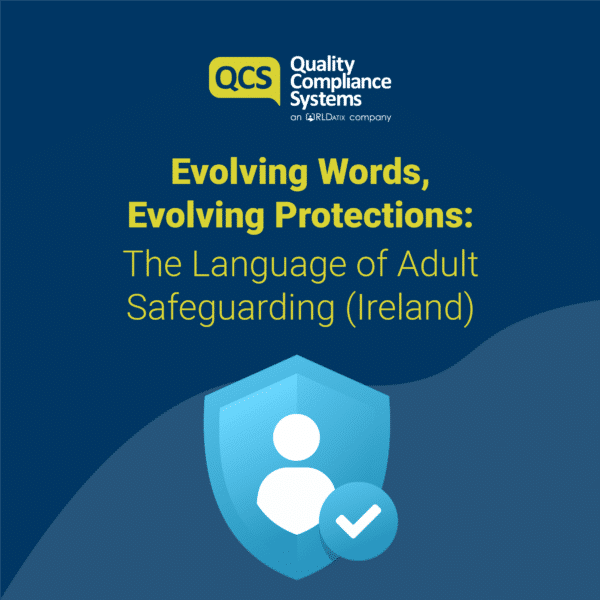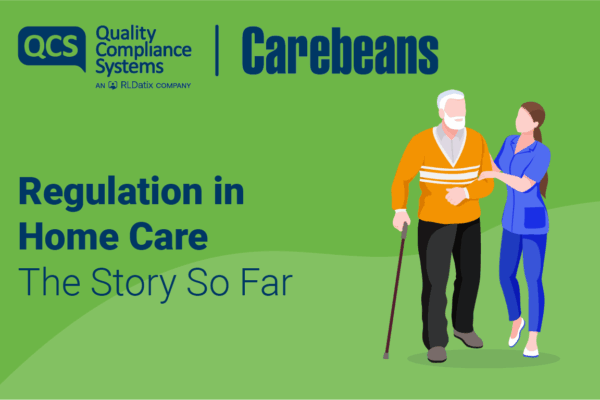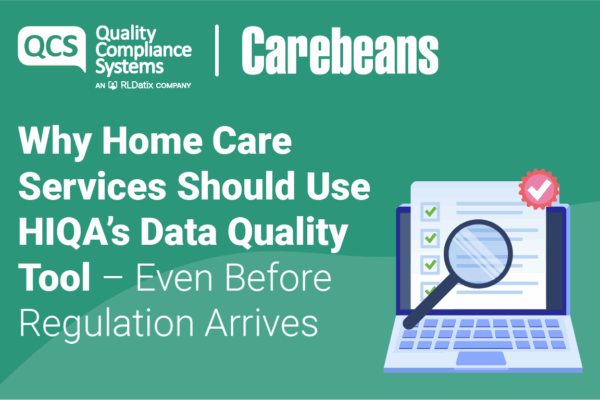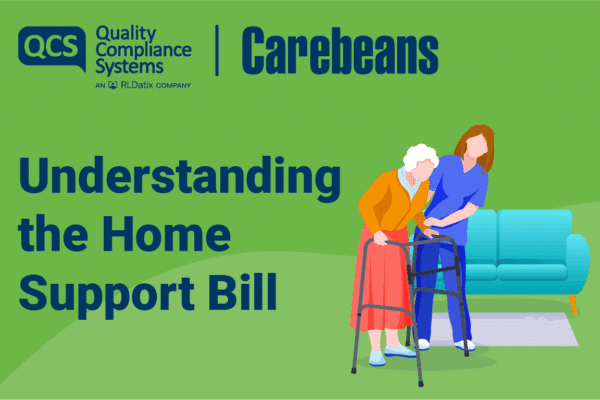The term ‘safeguarding vulnerable adults’ is commonly used, in documentation and staff training certificates, for example. However, it’s important to know that this term is gradually being replaced with broader terminology, such as ‘safeguarding adults at risk’ and ‘adult safeguarding’. These newer terms reflect the evolving legislative and policy framework that aims to protect adults in vulnerable situations from abuse, harm, and neglect.
The shift to ‘adult safeguarding’ reflects a more inclusive, rights-based approach that focuses on empowering adults who may be at risk, rather than defining them as vulnerable. As a safeguarding instructor for many years, I have long found this blanket labelling troublesome, since vulnerability is directly influenced by situation and context, and no-one likes to think of themselves as a ‘vulnerable person’.
So, while the term ‘vulnerable adults’ is still in use, Ireland is moving to align with international trends that emphasise autonomy and rights for people in need of safeguarding support.
The shift to using ‘adult safeguarding’ and ‘safeguarding adults at risk’ reflects a rights-based and more inclusive approach that focuses on empowering adults who may be at risk, rather than defining them solely as ‘vulnerable’.
This change is evident in the new Adult Safeguarding Bill (2024). This Bill suggests a number of positive changes, and included the introduction of newly-defined criminal offences, including coercive control and intentional ill treatment, as well proposing legal protections for anyone who reports these issues in good faith.
It is likely to be some time before this Bill is passed into law, but in the meantime, we can all play a part in destigmatising those who become vulnerable to abuse through illness, disability, age or circumstance, recognising the impact of language on individuals and by examining and altering the language we use.
Words are powerful. I believe the use of appropriate language has a key role to play in helping create a safe and inclusive environment where service users can feel comfortable to raise concerns. Fostering a culture of respect, understanding and openness empowers people who use services and professionals to work together to ensure the wellbeing, safety, and protection of individuals at risk of abuse or neglect.
Using Appropriate Language
As professionals, we should ensure we use appropriate language to ensure clarity and understanding.
- Using clear, unambiguous language helps convey information effectively and ensures everyone understands the roles, duties and expectations of everyone involved
- This also ensures we don’t disadvantage anyone who is not familiar with safeguarding policies, procedures and terminology
- Appropriate language empowers individuals to speak up about concerns or incidents of abuse:
- Creating an atmosphere where people feel comfortable expressing themselves without fear of judgment is essential for early intervention and prevention of harm
- Promote respect and trust:
- Language reflects our attitudes and values. When language is used thoughtfully and respectfully, it helps build trust between individuals, organizations, and the community. This trust is crucial for effective collaboration in safeguarding efforts
- Using respectful and inclusive language is particularly important when working with diverse populations:
- It acknowledges and values individual differences
Victim-Blaming Language
Victim-blaming is any language or action that implies (whether intentionally or unintentionally) that a person is partially or wholly responsible for abuse that has happened to them. It is harmful and can wrongfully place responsibility, shame or blame onto a victim, making them feel that they are complicit or responsible for the harm they have experienced.
People of all ages can display victim-blaming attitudes and it can happen both online and offline.
This kind of language can perpetuate stereotypes and stigmatise individuals and community groups, potentially hindering the reporting of abuse or neglect and creating barriers to seeking help. When victim-blaming language is used (whether deliberately or inadvertently) by professionals, there is a risk of normalising and minimising the experience of abuse or neglect that can result in a lack of appropriate response.
Some examples:
- “You should have been more careful”
- “Why did you open the door to someone you don’t know?”
- “He was far too trusting”
- “She made herself an easy target”
- “Why didn’t she get help earlier?”
- “Why didn’t you say no?”
Language such as this implies that a person is in some way responsible for their experiences of abuse. At best, it is deeply unhelpful, and at worst, it can reinforce feelings of shame and guilt for the person who has experienced abuse, or even prevent them from raising concerns, reporting abuse and getting help. This could result in existing abusive situations continuing, and create opportunities for further harm.
Often, victim-blaming language may be inadvertent, and the speaker means no harm. To this end, it’s important that we all reflect on our own biases, and the words we choose to use. Recognising and addressing bias is crucial for fostering fairness, respect and inclusivity. It is something we can all do for ourselves, which will enhance our relationships and professional development.
We all have biases – unsupported ideas and assumptions we hold about people or groups. They cause us to unknowingly assign characteristics to others based on a multitude of factors including (but far from limited to) age, socioeconomic status, weight, gender, ethnicity, or sexual orientation.
As health and social care professionals, I strongly believe that we need to examine bias, and aim to transcend the barriers that we think our differences to others create. We must therefore take reflective practice seriously, by questioning our assumptions.
It’s also important to be open to challenge when we inadvertently use inappropriate language. This will help in embedding our reflective learning and practices.
Avoiding victim-blaming language is essential for fostering trust, ensuring effective care, and promoting justice. Here are 7 key benefits:
1. Empowers
Benefit: Avoiding victim-blaming language supports the autonomy and dignity of the adult at risk by reinforcing that the abuse or neglect they may experience is not their fault.
Why: It helps individuals feel validated, understood, and respected, which can boost their confidence in coming forward and seeking help.
2. Encourages Reporting of Abuse
Benefit: When people feel they won’t be blamed or judged, they are more likely to report abuse or neglect, leading to earlier intervention.
Why: Fear of being blamed can prevent individuals from disclosing harmful situations. Non-blaming language creates a safe space for them to speak up.
3. Builds Trust and Relationships
Benefit: Using compassionate, non-judgmental language strengthens the trust between healthcare professionals and service users.
Why: Trust is essential for effective safeguarding. Victim-blaming language can erode trust, making individuals feel that professionals do not have their best interests at heart.
4. Shifts Responsibility to Perpetrators
Benefit: Proper language ensures that the focus remains on the actions of the abuser or those responsible for the harm, rather than the victim’s behaviour or circumstances.
Why: Blaming the victim obscures accountability – avoiding this type of language helps ensure that those causing harm are held responsible.
5. Promotes a Just and Supportive Environment
Benefit: Avoiding victim-blaming language fosters a culture of fairness and support, where vulnerable individuals feel protected by the systems that are meant to help them.
Why: In safeguarding, a supportive environment is essential for the well-being of vulnerable adults. Language that avoids blame keeps the focus on protection, healing, and justice.
6. Reduces Emotional Harm
Benefit: Non-victim-blaming language reduces the emotional and psychological harm that can result from feeling blamed for the occurrence of abuse or neglect.
Why: Individuals already facing abuse or neglect can suffer further trauma if they feel blamed. Compassionate language can prevent additional emotional distress and support recovery.
7. Enhances Professional Effectiveness
Benefit: Health and social care professionals act more effectively when they approach safeguarding without bias, assumptions, or blaming language.
Why: Victim-blaming language can cloud professional judgment and undermine safeguarding processes, while neutral, supportive language keeps the focus on intervention and support.
So, it’s time to reflect, consider and perhaps revise the language we use when speaking with service users, or when discussing safeguarding issues with colleagues.
Avoiding victim-blaming language not only strengthens the safeguarding process, it reinforces a culture of compassion and accountability. I believe this approach is crucial for adults at risk of abuse to feel safe and protected within their care environments.






